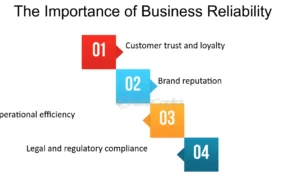Most IT professionals like to focus on their product or service when they start a company. And while we cannot deny the importance of these things, you won’t make it far if you also don’t create an actionable brand image.
The process of branding is crucial for all businesses, regardless of their size. This is why it is much better to create a solid, wholesome message from the get-go. Branding is important not only for the exterior stakeholders but also for employees. It helps them understand the purpose of the company and how to deliver that message to end-users.
Without further ado, here are 7 tips for creating an IT brand.
1. Determine the direction
A brand is not only used for marketing, but it should also help you determine the direction of the company. Whenever you feel lost, you should utilize brand message as something that should guide you during creative processes.
For example, you should utilize it for analyzing current products and services, as well as products and services you wish to create in the future. It is also crucial to define an optimal customer persona.
2. How do you compare to other businesses?
No matter what you’re doing, it is always wise to analyze successful competitors and how they get to where they are. Of course, you shouldn’t copy-paste their message; instead, you should utilize it as a basis for molding your own. It is a fine balance, and with some calibration, you can create an amazing business identity.
In fact, the majority of large brands utilized a similar strategy when they created their own brands. Truth be told, there is a lot of plagiarism in business, and companies tend to lean towards winning formulas. If you want to utilize this strategy, you should perform a deep analysis of various brand elements, including tagline, logo, visual image, and company’s message.
3. Think about the mission
The brand’s mission should answer a simple question: Why does this company exist? You should never neglect the company’s mission, as this is something that will drive most of your decisions going forward. While the mission can change, at one point, you shouldn’t experiment too much with it.
The mission statement should be reflected in everything you do. This includes your social media appearance, logo, name, taglines, website appearance, etc.
4. Find the ideal colors
Colors are a simple yet effective way to convey numerous subliminal messages and emotions. As such, they should also be utilized for selling the mission statement to stakeholders. There is a whole science behind company branding and colors where, for example, green reflects nature and is eco-friendly, red is for aggressiveness and expansionism, and blue is meant to be either relaxing or authoritative.
The thing about colors is that people don’t even think about them, but they still make an impact on their brains. Strangely enough, 60 to 90 percent of all purchasing decisions are based on colors alone.
5. Create a logo
Besides colors, logos are also important for leaving an impression. If we’re talking about major global brands, people are equally as likely to remember the logo as they are to remember the company’s name. One day, that logo will be utilized for establishing the brand’s identity and will become crucial for all your marketing efforts.
Ideally, you should go with a simplistic yet memorable logo. But, like everything else regarding branding, you need to do it the right way. So, you need to learn how to trademark a name and logo the right way.
6. Focus on brand voice
Brand voice is another thing that shouldn’t be neglected. It is important for business partners but also for customers. Like all other branding elements, brand voice will be utilized across the board for your IT site, social media, and all other promotional activities. Furthermore, you should also add brand voice and messaging when creating social media posts and website articles.
The biggest experts within the industry recommend that you utilize brand voice as if you’re a real person. Think about it this way: your brand voice needs to talk to people in a relatable, understandable manner that will resonate with the ideal customer persona.
7. Remain true to your brand and message
Once you set up various brand elements, it is important to stay true to your message, visual appearance, and everything else you stand for. Any small misalignment can leave stakeholders scratching their heads. These mistakes are even bigger for large brands, as they are more noticeable.
Consistency is crucial for building your image. It will make your IT company more recognizable and is especially important when there is fierce competition within a niche.



































